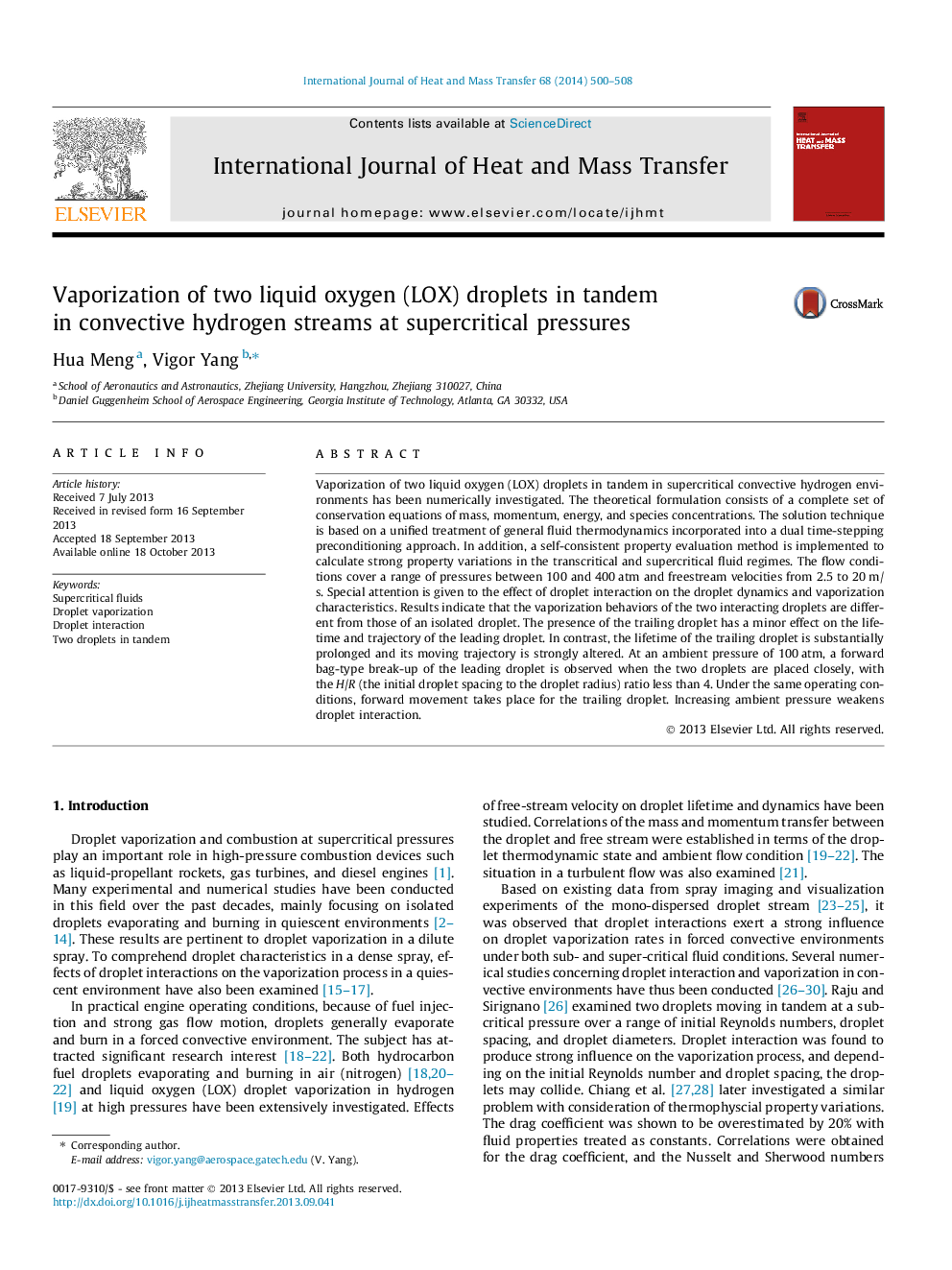| Article ID | Journal | Published Year | Pages | File Type |
|---|---|---|---|---|
| 658066 | International Journal of Heat and Mass Transfer | 2014 | 9 Pages |
Abstract
Vaporization of two liquid oxygen (LOX) droplets in tandem in supercritical convective hydrogen environments has been numerically investigated. The theoretical formulation consists of a complete set of conservation equations of mass, momentum, energy, and species concentrations. The solution technique is based on a unified treatment of general fluid thermodynamics incorporated into a dual time-stepping preconditioning approach. In addition, a self-consistent property evaluation method is implemented to calculate strong property variations in the transcritical and supercritical fluid regimes. The flow conditions cover a range of pressures between 100 and 400Â atm and freestream velocities from 2.5 to 20Â m/s. Special attention is given to the effect of droplet interaction on the droplet dynamics and vaporization characteristics. Results indicate that the vaporization behaviors of the two interacting droplets are different from those of an isolated droplet. The presence of the trailing droplet has a minor effect on the lifetime and trajectory of the leading droplet. In contrast, the lifetime of the trailing droplet is substantially prolonged and its moving trajectory is strongly altered. At an ambient pressure of 100Â atm, a forward bag-type break-up of the leading droplet is observed when the two droplets are placed closely, with the H/R (the initial droplet spacing to the droplet radius) ratio less than 4. Under the same operating conditions, forward movement takes place for the trailing droplet. Increasing ambient pressure weakens droplet interaction.
Related Topics
Physical Sciences and Engineering
Chemical Engineering
Fluid Flow and Transfer Processes
Authors
Hua Meng, Vigor Yang,
